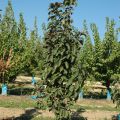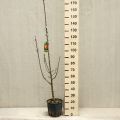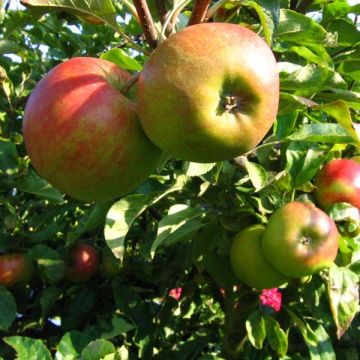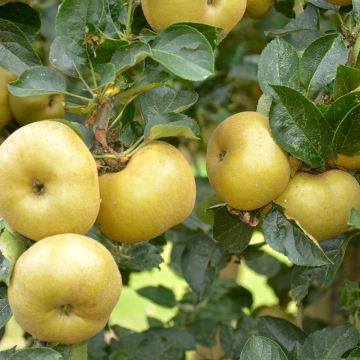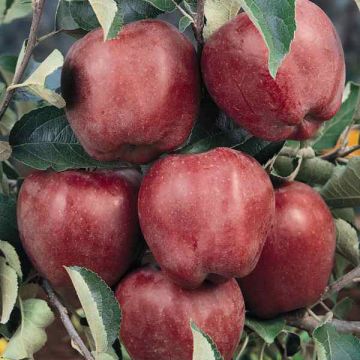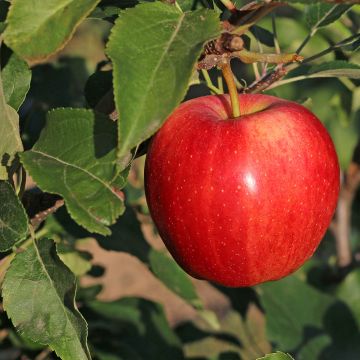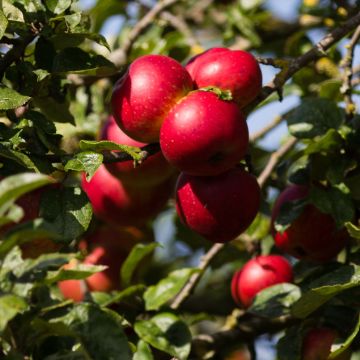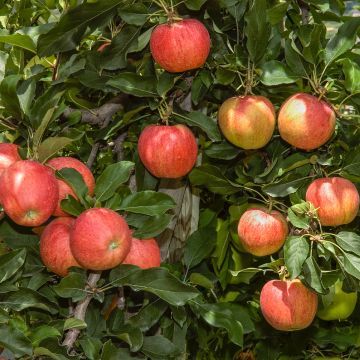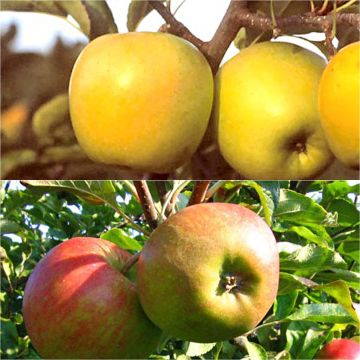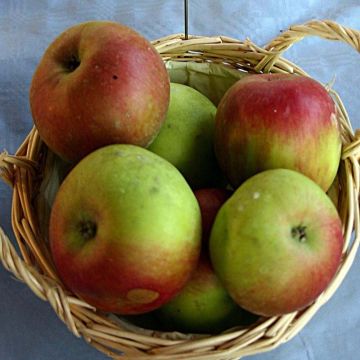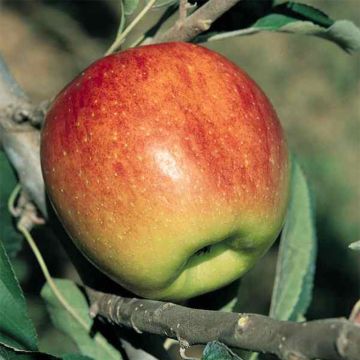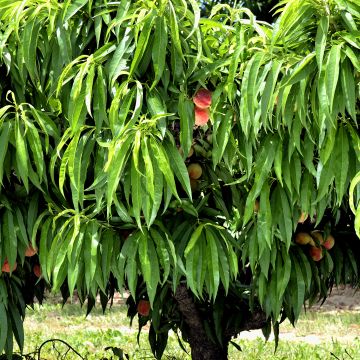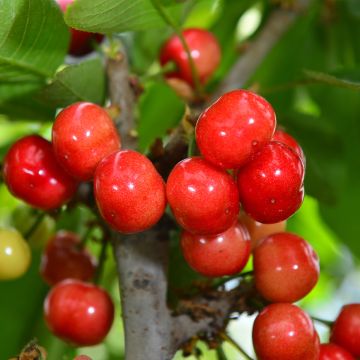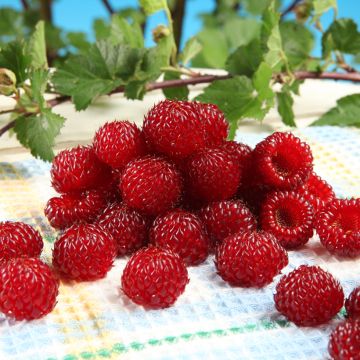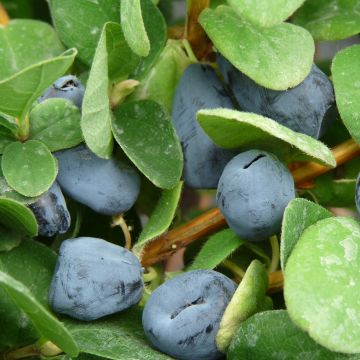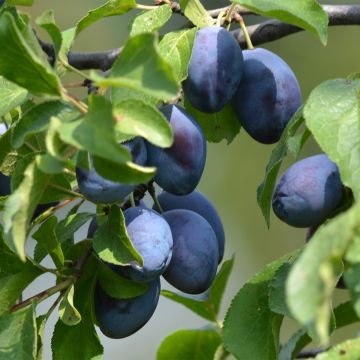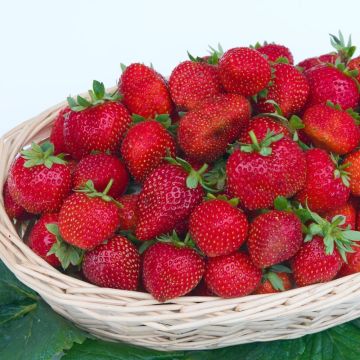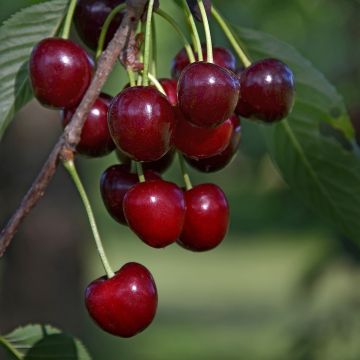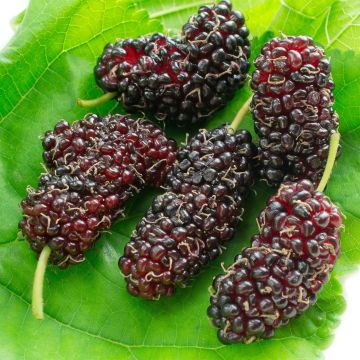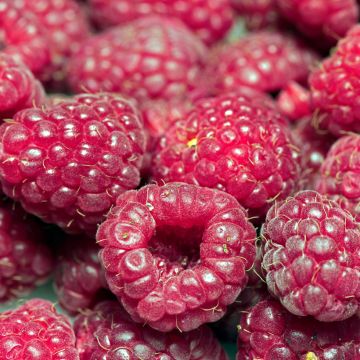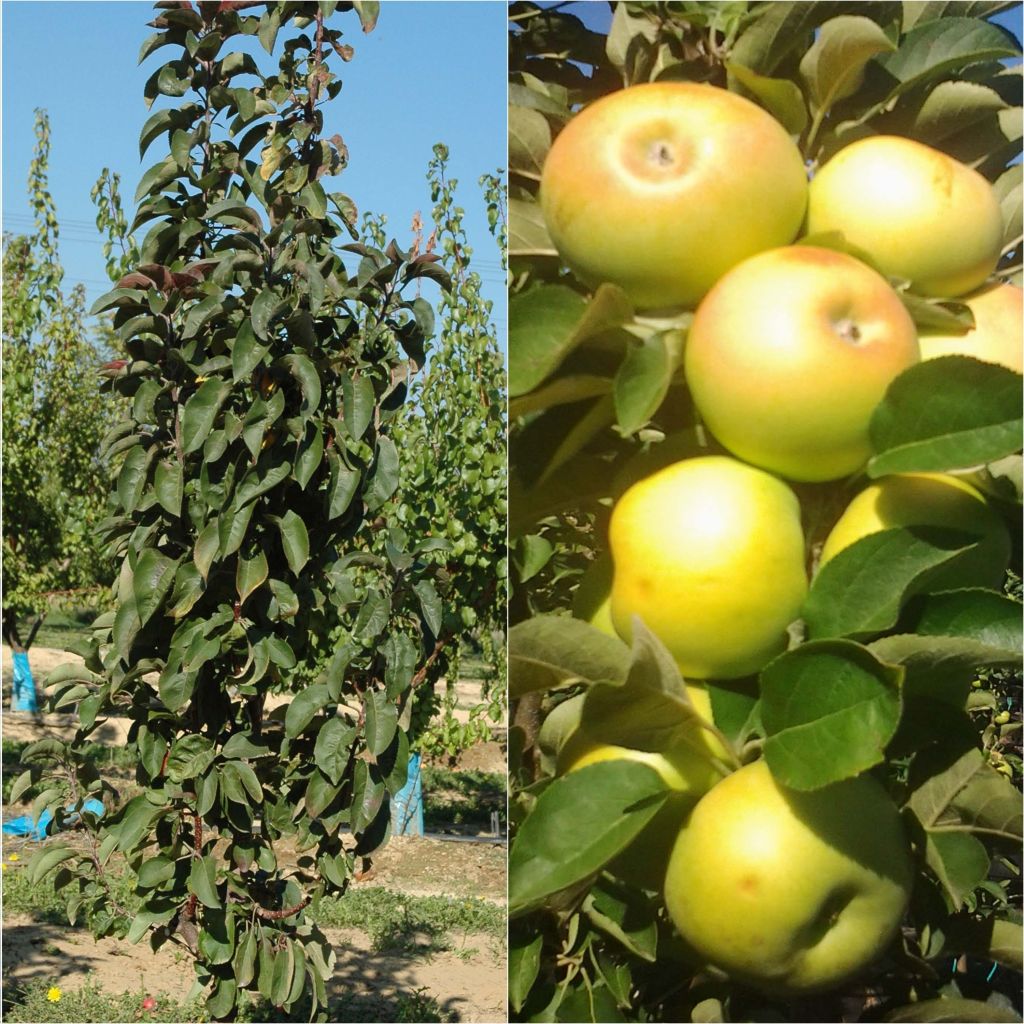

Pair of columnar apple tree pollinators
Pair of columnar apple tree pollinators
Malus domestica Ballerina Maypole, Ballerina Bolero
This item cannot be shipped to the selected country
Delivery charge from €5.90
More information
Schedule delivery date,
and select date in basket
This plant carries a 6 months recovery warranty
More information
We guarantee the quality of our plants for a full growing cycle, and will replace at our expense any plant that fails to recover under normal climatic and planting conditions.
From €5.90 for pickup delivery and €6.90 for home delivery
Express home delivery from €8.90.

Collection items (2 plants)
Description
This pollinator duo of columnar apple trees brings together the varieties 'Ballerina Maypole' and 'Ballerina Bolero'. Both are compact apple trees with a narrow habit, perfectly suited for small spaces and container cultivation. They are also highly decorative with their spring flowering or even their foliage in the case of the former. Planted close to each other, these two apple trees pollinate each other, ensuring a good fruit production. Their beautiful, high-quality apples are harvested in September and October. You can adopt them in a small garden, in a hedge, on the terrace, or in a patio.
This duo consists of:
- x 1 Columnar Apple Tree 'Ballerina Maypole': a highly decorative variety with its carmine pink spring flowering and its red foliage in summer and bronze in autumn. Its exceptional, abundant, and colourful flowering is both early and prolonged, from mid-March to mid-April. It is frost-resistant. This apple tree produces round, dark red fruits. Their flesh is sweet and juicy. Harvest takes place in October and the fruits can be stored until April.
- x 1 Columnar Apple Tree 'Ballerina 'Bolero': this variety produces round fruits, light green in color, golden yellow on the sun-exposed side. Their flesh is sweet and juicy. Its magnificent flowering, abundant, with a pinkish-white color, is early, occurring in early March, but it is frost-resistant. Harvest takes place from September and the fruits can be stored until December.
The apple tree is native to Europe, especially in France where its presence has been documented since ancient times. The Columnar Apple Tree Ballerina is a variety resulting from a natural mutation of McIntosh, making the tree columnar in 1969. This interesting aspect has led breeders to crossbreed this tree with varieties like 'Golden Delicious' and 'Greenleves' to improve its taste qualities. Four hybrids were born from these efforts, including the Columnar Apple Trees Ballerina 'Bolero' and 'Maypole'.
The columnar habit, taller than wide, is both space-saving and decorative, making these varieties particularly interesting for small gardens and even terraces and balconies as they can be grown in large pots. Pruning is not necessary for this tree with its astonishing habit. Its foliage is composed of very large, ovate, slightly fuzzy, deeply toothed leaves. They take on beautiful colors in autumn before falling. The Ballerina apple tree is very hardy and suitable for cultivation in all regions. Self-sterile, the presence of apple trees with flowering occurring at the same time is necessary. The columnar variety Ballerina 'Maypole' will be the best pollinator in the series.
In the kitchen:
The apples of Maypole and Bolero are particularly suitable for making pastries. They can be consumed cooked, in compotes, jams, on tarts, baked, in jellies, and in savory dishes, in combination with cheeses, for example.
Report an error about the product description
Plant habit
Fruit
Flowering
Foliage
Botanical data
Malus
domestica
Ballerina Maypole, Ballerina Bolero
Rosaceae
Cultivar or hybrid
Other Apple trees
Planting and care
Your Columnar Apple Tree can be planted in the ground in a very traditional way. Choose a sunny location, the soil can be slightly chalky or acidic but not excessively so. Dig a planting hole and simultaneously add organic matter (potting soil, compost) and a base fertiliser such as crushed bone. Do not bury the graft union. Stake and water thoroughly the first time, even in winter, even if it rains. Fruit trees are ideally planted between October and March, outside of the freezing period. You can add a small handful of wood ash during the winter, which is rich in potash, to improve fruiting.
The advantage of columnar fruit trees is that they can be planted in outdoor containers. Choose a container of at least 60L. Make sure the container is perforated and provide good drainage by filling the bottom with a thick layer of clay pellets or gravel. In pots, your trees will naturally require more regular watering. During winter, slide your fruit trees into a sheltered place away from the wind and stop watering during freezing periods. Every two years, at least, surface the soil by replacing the top layer with fresh potting soil and fertilise before flowering, choosing a special fertiliser that is not too rich in nitrogen.
There is no need to prune your Ballerina columnar apple tree.
Watch out for potential aphid attacks during the season. Only keep harvested fruits. Apples should be stored with the stem facing downwards, on shelves or in crates. Choose a preferably completely dark, dry, cool place, but frost-free.
Planting period
Intended location
Care
-
, onOrder confirmed
Reply from on Promesse de fleurs
Fruit trees for small gardens
Haven't found what you were looking for?
Hardiness is the lowest winter temperature a plant can endure without suffering serious damage or even dying. However, hardiness is affected by location (a sheltered area, such as a patio), protection (winter cover) and soil type (hardiness is improved by well-drained soil).

Photo Sharing Terms & Conditions
In order to encourage gardeners to interact and share their experiences, Promesse de fleurs offers various media enabling content to be uploaded onto its Site - in particular via the ‘Photo sharing’ module.
The User agrees to refrain from:
- Posting any content that is illegal, prejudicial, insulting, racist, inciteful to hatred, revisionist, contrary to public decency, that infringes on privacy or on the privacy rights of third parties, in particular the publicity rights of persons and goods, intellectual property rights, or the right to privacy.
- Submitting content on behalf of a third party;
- Impersonate the identity of a third party and/or publish any personal information about a third party;
In general, the User undertakes to refrain from any unethical behaviour.
All Content (in particular text, comments, files, images, photos, videos, creative works, etc.), which may be subject to property or intellectual property rights, image or other private rights, shall remain the property of the User, subject to the limited rights granted by the terms of the licence granted by Promesse de fleurs as stated below. Users are at liberty to publish or not to publish such Content on the Site, notably via the ‘Photo Sharing’ facility, and accept that this Content shall be made public and freely accessible, notably on the Internet.
Users further acknowledge, undertake to have ,and guarantee that they hold all necessary rights and permissions to publish such material on the Site, in particular with regard to the legislation in force pertaining to any privacy, property, intellectual property, image, or contractual rights, or rights of any other nature. By publishing such Content on the Site, Users acknowledge accepting full liability as publishers of the Content within the meaning of the law, and grant Promesse de fleurs, free of charge, an inclusive, worldwide licence for the said Content for the entire duration of its publication, including all reproduction, representation, up/downloading, displaying, performing, transmission, and storage rights.
Users also grant permission for their name to be linked to the Content and accept that this link may not always be made available.
By engaging in posting material, Users consent to their Content becoming automatically accessible on the Internet, in particular on other sites and/or blogs and/or web pages of the Promesse de fleurs site, including in particular social pages and the Promesse de fleurs catalogue.
Users may secure the removal of entrusted content free of charge by issuing a simple request via our contact form.
The flowering period indicated on our website applies to countries and regions located in USDA zone 8 (France, the United Kingdom, Ireland, the Netherlands, etc.)
It will vary according to where you live:
- In zones 9 to 10 (Italy, Spain, Greece, etc.), flowering will occur about 2 to 4 weeks earlier.
- In zones 6 to 7 (Germany, Poland, Slovenia, and lower mountainous regions), flowering will be delayed by 2 to 3 weeks.
- In zone 5 (Central Europe, Scandinavia), blooming will be delayed by 3 to 5 weeks.
In temperate climates, pruning of spring-flowering shrubs (forsythia, spireas, etc.) should be done just after flowering.
Pruning of summer-flowering shrubs (Indian Lilac, Perovskia, etc.) can be done in winter or spring.
In cold regions as well as with frost-sensitive plants, avoid pruning too early when severe frosts may still occur.
The planting period indicated on our website applies to countries and regions located in USDA zone 8 (France, United Kingdom, Ireland, Netherlands).
It will vary according to where you live:
- In Mediterranean zones (Marseille, Madrid, Milan, etc.), autumn and winter are the best planting periods.
- In continental zones (Strasbourg, Munich, Vienna, etc.), delay planting by 2 to 3 weeks in spring and bring it forward by 2 to 4 weeks in autumn.
- In mountainous regions (the Alps, Pyrenees, Carpathians, etc.), it is best to plant in late spring (May-June) or late summer (August-September).
The harvesting period indicated on our website applies to countries and regions in USDA zone 8 (France, England, Ireland, the Netherlands).
In colder areas (Scandinavia, Poland, Austria...) fruit and vegetable harvests are likely to be delayed by 3-4 weeks.
In warmer areas (Italy, Spain, Greece, etc.), harvesting will probably take place earlier, depending on weather conditions.
The sowing periods indicated on our website apply to countries and regions within USDA Zone 8 (France, UK, Ireland, Netherlands).
In colder areas (Scandinavia, Poland, Austria...), delay any outdoor sowing by 3-4 weeks, or sow under glass.
In warmer climes (Italy, Spain, Greece, etc.), bring outdoor sowing forward by a few weeks.

































